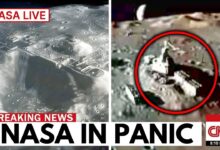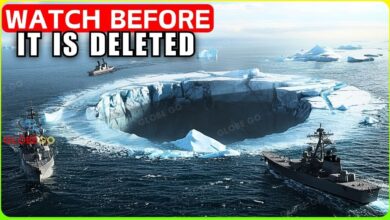What Was Found at the Bottom of the Ocean Shocked the Whole World

The **Clarion-Clipperton Zone (CCZ)** is a vast area of the Pacific Ocean floor, located between Hawaii and Mexico, spanning about 1.7 million square miles – roughly half the size of Canada. It is one of the most remote and pristine regions in the world, with an average depth of about 16,400 feet (nearly 5,000 meters). While much of the seafloor looks fairly normal, the CCZ is famous for its **polymetallic nodules** – valuable mineral deposits including nickel, manganese, copper, zinc, cobalt, and rare earth elements.

**Potential Resources and Value**
These “mineral nodules,” which resemble potato tubers, are formed over millions of years by seawater depositing minerals onto small objects like shark teeth that fall to the seafloor. **Each polymetallic nodule** contains many of the key materials for modern electronics, including smartphones, electric car batteries, and wind turbines. It is estimated that up to 33 pounds (15 kg) of these nodules can be found in every 10 square feet. Not only are they rich in minerals, but they also have the potential to replace depleted land-based resources, making the area worth trillions of dollars.

### **International Challenges and Regulations**
However, resource extraction from the CCZ is currently **banned**, as the area lies outside the territorial waters of any nation. The **International Seabed Authority (ISA)**, established in 1982 under the United Nations Convention on the Law of the Sea, is responsible for monitoring and licensing mining in the zone. The ISA allows mineral exploration, but has not yet issued licenses for actual mining as the rules for seabed mining are still being finalized.
### **Technology race and mining trials**
Although not yet officially exploited, many **mining companies and countries** are racing to prepare for the day when mining is allowed. **In 2022**, the Canadian company Metals Company tested mining equipment and collected 3,600 tons of polymetallic nodules during the testing phase. While this is not yet commercial mining, it marks an important step in technology research. The subsea mining process involves collecting nodules from the ocean floor and transferring them through a system of pipes to surface ships for cleaning and transportation to the mainland.
### **Mining vs. environmental protection debate**
Mining companies argue that **seabed mining is less harmful** than mining on land, which destroys rainforests and causes serious pollution. However, many scientists and environmental organizations warn that **seabed mining can cause irreversible damage** to the seabed ecosystem. Some countries and companies have **boycotted seabed mining** because of concerns about the negative impact on the ocean environment.
**The future of seabed mining**
To manage and develop sustainably, the ISA is continuing to draft mining regulations and is expected to complete them by July 2025. However, **pressure from companies and increasing demand for minerals** make the process complicated. If one company is granted a license, others will quickly rush into the area, starting a **race to exploit resources** under the seabed.
This mining is expected to help meet the demand for raw materials for green technology, but it also raises questions about sustainability and humanity’s responsibility to protect the environment.








